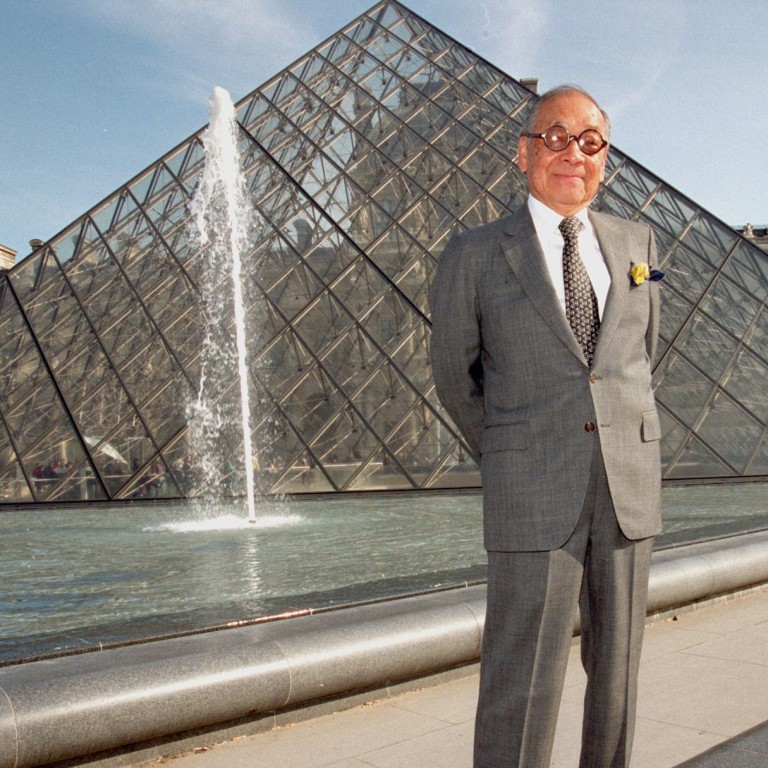
Genius by design leaves his global mark
- I.M. Pei, who has died at 102, created some of the world’s most admired structures from Hong Kong’s imposing Bank of China Tower to the iconic glass pyramid of the Louvre Museum in Paris
Born on the mainland and raised in Hong Kong before studying in the United States, Ieoh Ming Pei soon became a promising architect. Formerly a junior designer with a New York developer, he made his name after winning the commission to design the John F. Kennedy Presidential Library and Museum, soon after Kennedy’s assassination in 1963. At the age of 80, Pei was still travelling the Middle East to seek inspiration for the Museum of Islamic Art in Qatar. His unapologetic use of geometric shapes, plain surfaces and natural light throughout the years made his works structurally expressive and visually impressive. His portfolio spans civic and commercial spheres across the globe.
There were also setbacks and challenges. Pei struggled in his early years to fix the John Hancock Tower in Boston, after the glass facade of the 60-storey block had design issues that led to delays and cost overruns. He later faced opposition over the glass pyramid in the courtyard of the Louvre. However, time seems to have proved critics wrong, as what was once seen as an out-of-place edifice is now one of the most famous landmarks in Paris. “If there’s one thing I know I didn’t do wrong, it’s the Louvre,” he said.
Descended from a traditional family with six centuries of history, Pei’s Chinese roots contributed to his success. He became the first overseas architect commissioned in the post-war era to build the Fragrant Hill resort complex outside Beijing. The Suzhou Museum in Jiangsu province and Luce Memorial Chapel in Taiwan are also his work. Pei’s ideas were always thought-provoking. “At one level my goal is simply to give people pleasure in being in a space and walking around it. But architecture can reach a level where it influences people to want to do something more with their lives,” he said. No one doubts he achieved that.

